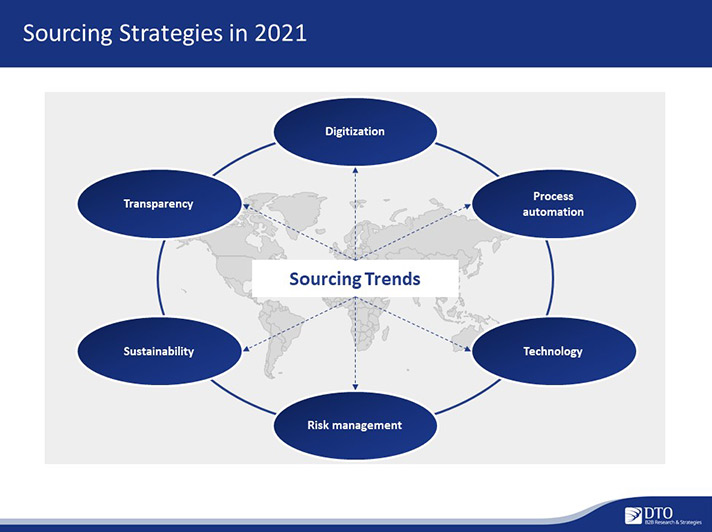
Year in review: Which sourcing strategies prevailed in 2020?
Strong turbulences and uncertainties have characterized the past year. Despite the major hurdles, most companies presented a response profile with high flexibility, a quick ability to adapt and a high degree of creativity. No business sector or industry was spared. From human resources to purchasing, decision-makers had to take new measures and find optimal solutions for their areas on a daily basis.

For Procurement, the topic of flexibility remains at the top of the agenda in the new year
To prevent procurement problems and supply bottlenecks from recurring in 2021, purchasing decision-makers want to react more quickly to unexpected events - such as a pandemic. Likewise, supply chains must not break due to trade disputes (e.g. Brexit). To prevent this from happening, decision-makers will increasingly focus on alternative sources of supply and always have an alternative option for procuring spare parts.
Supply Chain Act: How long will human rights continue to be violated?
The debate about tightening legal regulations continues, but an effective breakthrough still remains elusive despite many rounds of political negotiations. The Supply Chain Act is intended to ensure compliance with social and environmental standards in global business relationships - not just domestically. For buyers, this means creating more transparency in their supply chains. All parties in the supply chain, including their partners and their subcontractors, must adhere to the guidelines without exception.
Redesign of the supply chain management
Implementing new regulations and achieving greater transparency requires the collection, processing and analysis of large amounts of data, as well as the constant flow of information between multiple parties - preferably in real time. Risk management also comes into consideration here, as complex supply chains and collaboration with multiple sub-suppliers require reputable data sources and the fast and efficient analysis of information. There is no doubt that the reluctant use of software and cloud solutions in Germany will be overtaken by the digital and technological transformation. This will be imperative for automation in the procurement process. Even before the Corona crisis, companies were dealing with procure-to-pay solutions and today this is becoming even more important. Through a database-driven and or web-based in-house software solution, all activities in the procurement chain - from ordering raw materials for the production of a product or service to paying an invoice - can be monitored more easily and carried out more efficiently. Companies that want to achieve competitive advantages and continue to grow will pursue this sourcing trend in the future.
Further Information
Would you like more information on this topic? If so, please get in touch with us. Our offices in Germany, Estonia and Singapore are available for a free and non-binding consultation.
Text written by Ebru Alemdar